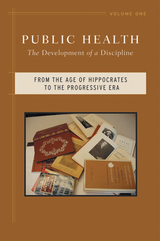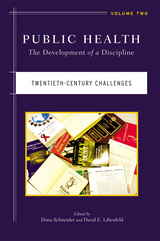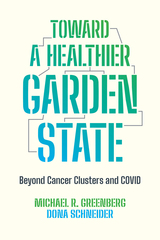5 books about Schneider, Dona

American Childhood
Risks and Realities
Schneider, Dona
Rutgers University Press, 1995
What is happening to American youth today? There is a mountain of statistics gathered about our children, but it is often hard to know what the numbers mean. Dona Schneider argues that "sound- bite statistics" on teenage pregnancy or child abuse can mislead us and create bad public policy. But a closer look at those same statistics can give us a window on tomorrow's public health and social problems.
To show how the statistics can both disguise and highlight problems, Schneider alternates a discussion of the numbers with vivid encounters with individual children and adults: the middle-class black high school student's offhand explanation about how to get a gun; a vital statistics bureau worker's astonishment at his own classification as Hispanic; a young woman's pleasure in holding down a job after teachers dismissed her as learning disabled; and a latchkey child's nightmare of coming home from school to an empty house when she was sick.
This book guides us through the morass of numbers bandied about to describe the state of America's children—what the numbers tell us and what they don't—and it offers a call for action. Comprehensive in its treatment of all groups of children and accessible in style, this book is essential for anyone concerned about children in American society.
To show how the statistics can both disguise and highlight problems, Schneider alternates a discussion of the numbers with vivid encounters with individual children and adults: the middle-class black high school student's offhand explanation about how to get a gun; a vital statistics bureau worker's astonishment at his own classification as Hispanic; a young woman's pleasure in holding down a job after teachers dismissed her as learning disabled; and a latchkey child's nightmare of coming home from school to an empty house when she was sick.
This book guides us through the morass of numbers bandied about to describe the state of America's children—what the numbers tell us and what they don't—and it offers a call for action. Comprehensive in its treatment of all groups of children and accessible in style, this book is essential for anyone concerned about children in American society.
[more]

Environmentally Devastated Neighborhoods
Perceptions, Policies, and Realities
Greenberg, Michael
Rutgers University Press, 1996
Only 3% of all Americans believe they live in bad neighborhoods. But 30% to 45% of those who live in places with crime and illegal drug sales, rats and stray dogs, hazardous waste sites, factory pollution, and abandoned and blighted buildings rate their neighborhood as poor quality. Even when these neighborhoods have good schools, parks, and other amenities, their resident's ratings do not go up. This holds true no matter who is asked - young, old, men or women, middle class, working class, or on welfare. Local health and planning officials corroborate resident perceptions. It is particularly noticeable that stress from living near a toxic waste site - the hazard that gets the biggest attention in terms of dollars spent - is low on the resident's list of fears about their neighborhoods. They'd much prefer to see the money put to fixing the immediate dangers on their block. But because federal and state government policies for protecting public health, lowering crime, and saving the environment are divided into separate bureaucratic cubby-holes, effective planning to improve these stressed neighborhoods is difficult. Beginning with the call for a definition of "environment" that fits the realities of these places, the authors argue for and propose policy initiatives that address all the desperate needs of these beleaguered neighborhoods. This book is essential reading for students, academics, and professionals in environmental studies, public health, urban studies and planning, as well as grassroots community organizers.
[more]

Public Health
The Development of a Discipline, From the Age of Hippocrates to the Progressive Era
Schneider, Dona
Rutgers University Press, 2008
Public health as a discipline grew out of traditional Western medicine but expanded to include interests in social policy, hygiene, epidemiology, infectious disease, sanitation, and health education. This book, the first of a two-volume set, is a collection of important and representative historical texts that serve to trace and to illuminate the development of conceptions, policies, and treatments in public health from the dawn of Western civilization through the Progressive Era of the early twentieth century.
The editors provide annotated readings and biographical details to punctuate the historical timeline and to provide students with insights into the progression of ideas, initiatives, and reforms in the field. From Hippocrates and John Graunt in the early period, to John Snow and Florence Nightingale during the nineteenth-century sanitary reform movement, to Upton Sinclair and Margaret Sanger in the Progressive Era, readers follow the identification, evolution, and implementation of public health concepts as they came together under one discipline.
The editors provide annotated readings and biographical details to punctuate the historical timeline and to provide students with insights into the progression of ideas, initiatives, and reforms in the field. From Hippocrates and John Graunt in the early period, to John Snow and Florence Nightingale during the nineteenth-century sanitary reform movement, to Upton Sinclair and Margaret Sanger in the Progressive Era, readers follow the identification, evolution, and implementation of public health concepts as they came together under one discipline.
[more]

Public Health
The Development of a Discipline, Twentieth-Century Challenges
Schneider, Dona
Rutgers University Press, 2011
Published in 2008, the first volume of Public Health focused on issues from the dawn of western civilization through the Progressive era. Volume 2 defines the public health challenges of the twentieth century--this important reference covers not only how the discipline addressed the problems of disease, but how it responded to economic, environmental, occupational, and social factors that impacted public health on a global scale. Major illnesses such as cancer, HIV, and tuberculosis are addressed, along with lifestyle concerns, such as tobacco and nutrition. Chapters also explore maternal-child and women's health, dental public health, health economics and ethics, and the role of philanthropy. Each chapter begins with an in-depth introduction, followed by three original articles that illustrate the problem. The volume is enhanced with a detailed chronology of public health events, as well as appendices that contain many of the original documents that ushered public health into the new millennium.
[more]

Toward a Healthier Garden State
Beyond Cancer Clusters and COVID
Michael R. Greenberg
Rutgers University Press, 2023
While New Jersey now frequently appears near the top in listings of America’s healthiest states, this has not always been the case. The fluctuations in the state’s overall levels of health have less to do with the lifestyle choices of individual residents and more to do with broader structural issues, ranging from pollution to urban design to the consolidation of the health care industry.
This book uses the past fifty years of New Jersey history as a case study to illustrate just how much public policy decisions and other upstream factors can affect the health of a state’s citizens. It reveals how economic and racial disparities in health care were exacerbated by bad policies regarding everything from zoning to education to environmental regulation. The study further chronicles how New Jersey struggled to deal with public health crises like the AIDS epidemic and the crack epidemic. Yet it also explores how the state has developed some of the nation’s most innovative responses to public health challenges, and then provides policy suggestions for how we might build an even healthier New Jersey.
This book uses the past fifty years of New Jersey history as a case study to illustrate just how much public policy decisions and other upstream factors can affect the health of a state’s citizens. It reveals how economic and racial disparities in health care were exacerbated by bad policies regarding everything from zoning to education to environmental regulation. The study further chronicles how New Jersey struggled to deal with public health crises like the AIDS epidemic and the crack epidemic. Yet it also explores how the state has developed some of the nation’s most innovative responses to public health challenges, and then provides policy suggestions for how we might build an even healthier New Jersey.
[more]
READERS
Browse our collection.
PUBLISHERS
See BiblioVault's publisher services.
STUDENT SERVICES
Files for college accessibility offices.
UChicago Accessibility Resources
home | accessibility | search | about | contact us
BiblioVault ® 2001 - 2024
The University of Chicago Press









